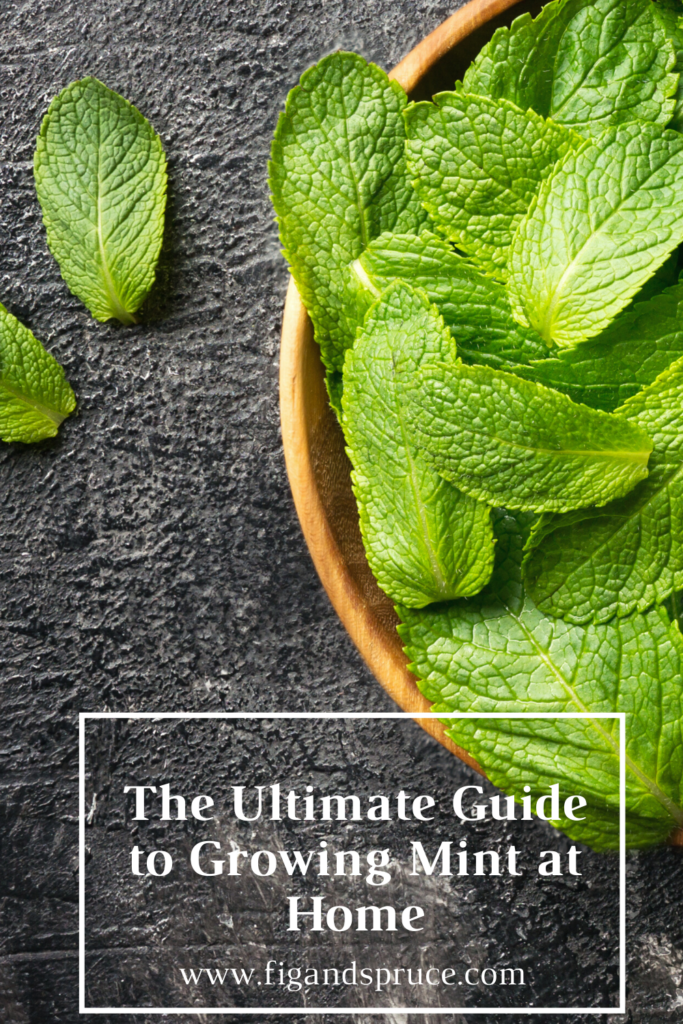How to Start a Garden in an Apartment Without a Balcony
Gardening in an apartment without a balcony can be intimidating and difficult for beginners. Keep reading for ideas on how to get started!
Gardening in an apartment without a balcony can be intimidating and difficult for beginners. Keep reading for ideas on how to get started!
Learning how to grow your own food can be tricky, especially if you’re in an apartment or a rental house (or even just a tiny house that you own). Sometimes it can feel like you need a large outdoor space to get started, but today…
Growing mint at home is one of the most popular ways for beginners to start their herb garden. Mint is one of the most well-known and popular herbs known today. From Asia to Australia, many expert gardeners and botanists enjoy growing this herb because of its sweet smell and refreshing taste. Although the US grows more than two-thirds of the mint produced in the world, it is grown across every country.
Whether it be tea or a full-fledged meal, mint is used in a variety of dishes. Mint is also one of the most versatile and diverse herbs known to mankind. There are surprisingly more than 600 varieties of mint that boasts various tastes and colors. Although generally known for its sweet and refreshing taste, there are several varieties of mint which possess a different flavor. For example, orange mint is somewhat sour while Red Raripila Mint is used to produce poisonous oils.
Because of these benefits, it is always a good idea to grow mint in your backyard (or wherever you like!). Although growing a mint is fairly simple, there are some points that might trouble young and novice gardeners. That is why we have written this elaborate guide that takes you through all the necessary steps to make your mint garden bloom in no time!
The importance of sunlight for a plant cannot be underestimated. Mint needs a sufficient amount of light to thrive. Ideally, mint grows best in full sun (six to eight hours of sunlight per day). However, with regular watering and maintenance, they grow fairly well in full sun as well. It is one of the few edible herbs that can grow well in both of these settings. Mint belongs to the hardy perennial species of plants and can survive rough weather.
Mint prefers a mix of fertilized and moist soil. They show the best growth in well-drained soil with a layer of mulch on top. A pH range of 6.5-7 is known to promote optimum growth. Although mint can grow in a variety of soil types, a soil that has sufficient content of minerals and organic matter would be the best choice.
The most important step in growing a mint plant is planting the seed and making sure that the mint germinates on time. Follow this step-by-step guide to ensure that your mint plant grows perfectly.
Mint is not one of those herbs that require extensive watering. If you live in a dry climate with lots of direct sunlight, watering the mint plants 3 to 4 days a week should be enough. However, if you live in a cool, humid climate even watering them twice a week would do.
If the soil feels dry on touching, you should add water. Keep in mind that both under-watering and over-watering mint plants can result in poor growth and the plants may die. If you’re unsure or want to be certain you’re at the right water level, we recommend using a soil moisture meter to measure your plant’s moisture levels accurately.
Fertilizers stimulate the rapid growth of a variety of plants. If you are planning on harvesting heavily, adding an adequate amount of fertilizers would make sure that the mint matures early.
Mint prefers slow-release of granular fertilizers, like this one from Miracle Gro. The fertilizer should be added in small quantities to the plant is in the early stages of its development. It is better to ensure that the fertilizer does not touch the leaves of mint, otherwise it will affect the taste and flavor of mint.

Ever thought about starting an herb garden on your balcony, but not sure where to begin? Herbs are one of the easier categories of plants for beginners to start with. They usually grow relatively fast compared to other fruits or vegetables, and provide a lot…
We’re offering our free guide on growing your own herb garden. This 26 page guide covers how to care for your favorite herbs, including basil, chives, rosemary, and more!
Psst! Heads up – Fig & Spruce is a partner with a number of companies. As you click through our links, there’s a chance we’ll make a small commission on any sales made. We work with Amazon and other similar brands to help highlight the best products for your gardening adventures. Rest assured though, we only recommend products that we fully stand behind and love.